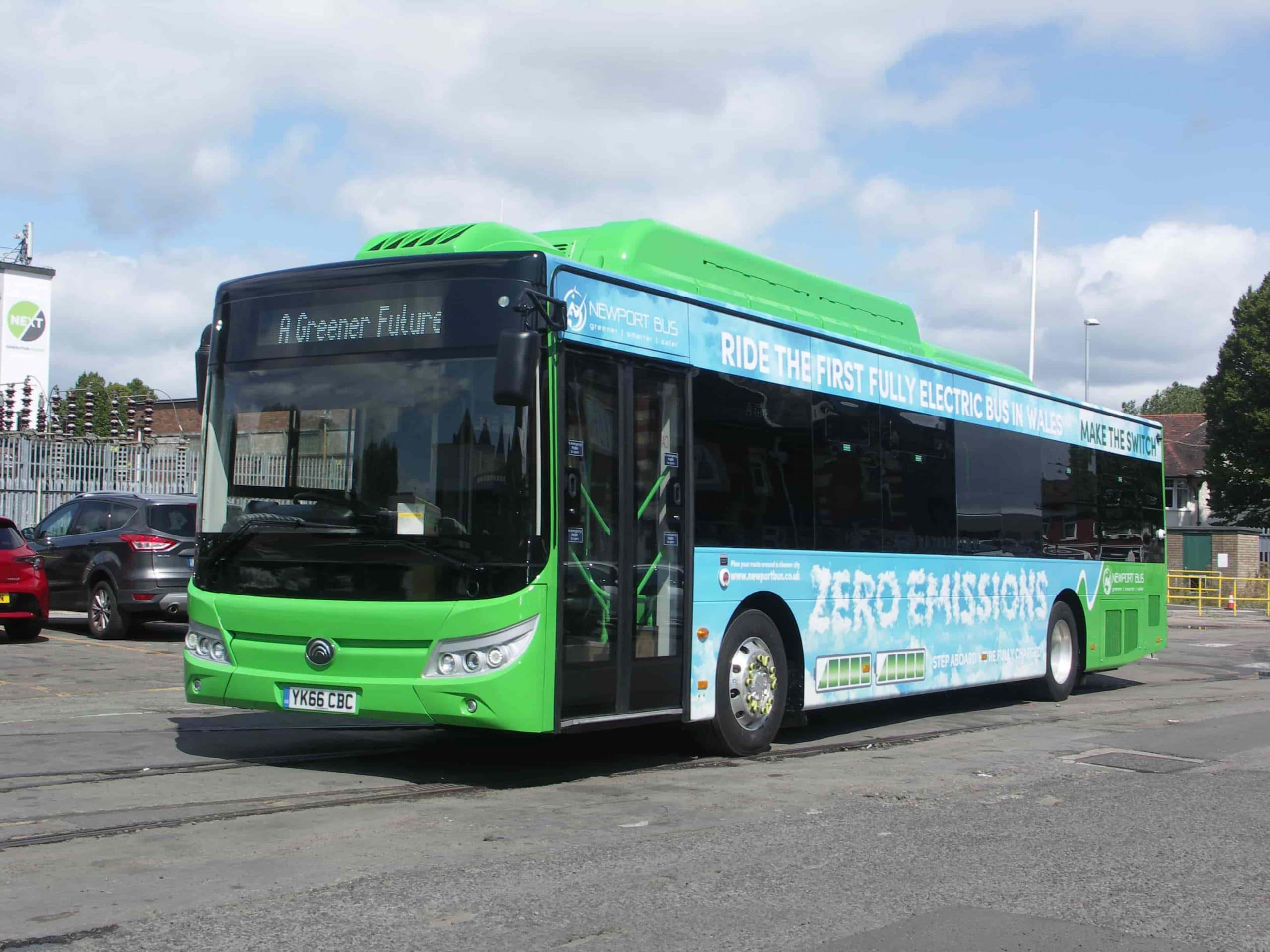After a stuttering introduction, it is likely that the viability of coach Euro VI exhaust retrofit options for older vehicles will continue to develop rapidly in 2020 and 2021. That’s according to Baumot UK, which is pushing its expanding upgrade portfolio for the coach sector.
Using its BNOx system, Baumot already has an accredited retrofit solution available for one coach engine type: The 9.3-litre Scania DC09 at Euro IV and Euro V when rated at 360bhp.
A system for the 9.2-litre DAF PR engine – common in integral coaches from Bova, Irizar, Temsa, Van Hool and VDL – will shortly be submitted for accreditation, as will one for the Volvo B12B chassis.
A Euro VI retrofit exhaust for the MAN D26 engine, found in both the OEM’s own chassis and Neoplan coaches, is currently under development. Beyond that are likely to be systems for the DAF MX and Scania’s DC13.
Upswing in interest for coach Euro VI retrofit
That pace of work contrasts starkly with what was initially a slow market for coach Euro VI retrofit. Why have things changed? It is because of a handful of factors, says Baumot UK Director of Sales and Service David Hobbs.
One of them is down to the fact that the design and accreditation of coach retrofit systems represents a development of the work already done by Baumot and others for bus retrofit.
While coach volumes will never equal those of buses, much of what is happening in coach retrofit is the adaptation of componentry and technology that is already proven. “The two applications are very similar,” David explains. “It is largely a question of how the unit is located and mounted.”
Baumot’s BNOx product is ‘right sized’ to suit the higher exhaust gas flow of the larger engines typically used in coaches. AdBlue dosing rates also reflect those cubic capacities, yet the majority of parts are standard, production released items.
But perhaps the main reason why coach retrofit is gaining traction is simple market forces. Operators are calling Baumot on an increasingly regular basis to enquire about it.
That, says David, is something Baumot believes will drive the accreditation of more systems as the need to comply with London’s expanding Low Emission Zone (LEZ), Clean Air Zones in England and Scotland’s LEZs becomes more pressing.
Coach Euro VI retrofit: How is it done?
To give an idea of how Baumot UK carries out the design, installation and testing work necessary to accredit a Euro VI retrofit system, it is worth taking the development coach with the DAF PR engine as an example. It is an Irizar i6 integral.

“When a new vehicle type arrives at our Silverstone premises, the first things we do are data log it and drive it,” says David.
“Our engineers can then decide on the technical aspects of the retrofit unit: Its location, orientation and size, and its AdBlue dosing rate.”
Where the system is located is key. Baumot has learned that a location within the engine bay that may be optimal for its installation team could create in-service issues for depot personnel. That is considered at this stage.
The location of any equipment such as an auxiliary heater or a rear-mounted toilet is also relevant during the design process. Once the size and location of the retrofit unit are decided upon, it is then installed by Baumot technicians.
Then, the coach is extensively road tested to ensure that the system does what it should before dispatch to Millbrook Proving Ground. There, further testing will take place before approval by the Energy Saving Trust through its Clean Vehicle Retrofit Accreditation Scheme (CVRAS).
More coach models to follow from Baumot
Once Baumot’s current tranche of coach retrofit developments are complete, its attention will turn to others. It’s likely that the Mercedes-Benz Tourismo will form part of that process, but David observes that all decisions will be based on where the market leads.
If Baumot can take advantage of a change to CVRAS processes that will permit the accreditation of an OEM’s whole engine range, and not on a unit-by-unit basis, the approval process will be greatly accelerated.
Under that method, the technology manufacturer would design and have accredited a retrofit system for the largest engine in an OEM’s range. It could then be permitted to offer BNOx systems for smaller engines from the same manufacturer that have not been subject to the full Millbrook testing cycle. If that accreditation process is introduced by Baumot, the benefits to end users are clear.
But David cautions that it is unlikely that all coach models will be suitable for retrofit. He says that around 20% of those in the market at otherwise suitable Euro levels will not be economically viable to develop systems for due to low volumes.

Baumot sees that bus exhaust retrofit will eventually slow as all those vehicles that are suitable will either be treated or replaced.
As a result, its UK development work now heavily favours coaches.
“The coach retrofit market has a great deal of longevity,” David continues.
“Eight months ago, things were quite muted. But we saw good feedback from operators at Coach & Bus UK and work we have done with the Confederation of Passenger Transport has also been beneficial.”
Warranty and support are offered
Baumot can install its BNOx unit at a variety of locations. Its UK head office at Silverstone is an option, as are premises at Leyland in Lancashire. It is also working with a third-party engineering company in the West Midlands with a view to it acting as a fitting agent.
Installation work could also be carried out at dealers’ workshops when coaches have been taken as part-exchanges, and the operator’s own depot is a further option if suitable facilities are available.
During the fitting process, work is always carried out on the vehicle’s AdBlue system. AdBlue dosing is one of the keys to the BNOx unit’s performance.
Where a coach does not have AdBlue from new, Baumot adds a system during the conversion process, along with a gauge in the cab. When an OEM AdBlue system is already fitted, the only component that is retained is the tank; everything else is replaced as part of Baumot’s work.
That is because any vehicle’s SCRT system has a finite life and will need replacing at some point, says David. Although changing most of the AdBlue system adds complication, it is done to assure reliability.
Long-lead components all held on the shelf
Buyers need not worry about that work adding to lead times. David says that more recently, Baumot UK has developed a supply chain here to complement that operated by its parent company in Germany. Components with longer lead times are held on the shelf at Silverstone.
The BNOx unit’s ammonia generator is retained in most coach fittings. It mitigates against low exhaust temperatures affecting emissions-reducing performance. While David accepts that such an issue is less common in coaches than in buses, it can still occur in heavy traffic. The ammonia generator engages as necessary under such circumstances.

Once fitted to the vehicle, the retrofit equipment is supported by Baumot’s own engineers. Baumot has country-wide coverage and it hopes that will give customers confidence.
The BNOx system comes with two years’ warranty as standard that can be extended to five years at extra cost.
A service package can also be added at extra cost and again for up to five years.
The routine maintenance requirement of a retrofit Euro VI exhaust system is the same as for OEM equipment; if Baumot’s service package is chosen, “all the operator needs to do is fill the vehicle with AdBlue,” says David.
What of the future for coach retrofit?
While Baumot will deal with operators directly, it is also working closely with various dealerships. Under that arrangement, the buyer of a used coach could be able to specify its retrofit to Euro VI using the BNOx system and include the cost of that within the vehicle’s finance agreement.
For both dealers and operators, a viable Euro VI retrofit solution will form one part of any cure to the problem of scores of overvalued Euro V coaches on the used market.
Baumot UK does not rule out offering BNOx variants for the lighter front-engined chassis that are used in smaller coaches. Its parent in Germany is currently working on those, although it is too early to say whether they will be viable here.
What the supplier would now like to see is government money directed towards coach Euro VI retrofit. David believes that from a technology perspective, Baumot’s offering for the sector is where it needs to be and that in terms of range, it will continue to grow.
“We know that if our job is done properly, orders are there to be taken. The timing is key; operators are quickly accepting the reality of CAZs and LEZs. Dealers are also driving development as they see great difficulty in selling used Euro V coaches,” says David.
“We have a lot more confidence in Euro VI retrofit for coaches than before.”



























